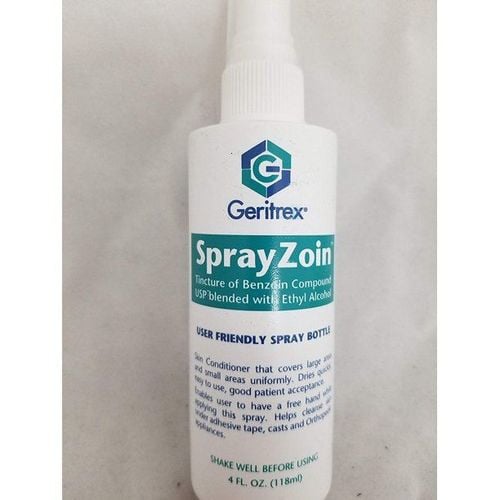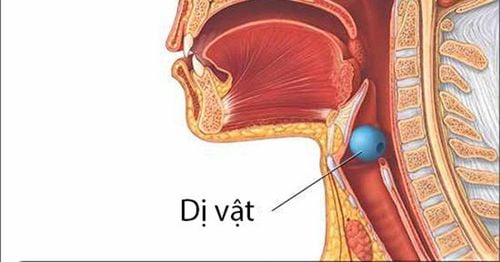This is an automatically translated article.
Acute bronchitis is usually caused by a virus or bacteria. When the disease is cured, it usually leaves no sequelae. But if left untreated, there will be dangerous complications such as respiratory failure, pneumonia.1.What is acute bronchitis?
The bronchial mucosa is the part that takes on the role of retaining dust particles and toxic substances and transporting them out, keeping the airways clean. Acute bronchitis occurs when the bronchial mucosa from the larynx to the lung parenchyma is infected, which can lead to inflammation of the nose, throat, larynx,...Acute bronchitis is a respiratory infection disease. most commonly encountered in daily life. Almost everyone suffers from it at least once in their life. The disease can heal on its own after 1-2 weeks and leave no sequelae.
Patients should also note, there are many cases of acute bronchitis with atypical symptoms, sometimes causing misdiagnosed with other infections of the lung such as pneumonia, pus in the lung, or purulent disease. in the pleural cavity.
However, for some people with acute bronchitis, they are prone to superinfection, causing the disease to last for a long time, which can lead to chronic bronchitis. Besides, the disease also causes dangerous complications such as pneumonia, respiratory failure ... so the patient should not be subjective.
2. Common Symptoms
The doctor will base on the symptoms when examining, if necessary, they can order a number of different tests.Symptoms of the disease are often very recognizable. However, there are quite a few people who are subjectively not treated early, leading to unpredictable complications. In the early stages, people with acute bronchitis may have the following symptoms:
Cough: As a non-specific symptom, it indicates inflammation somewhere in the respiratory tract, from the nasopharynx down. to the lungs. However, experienced clinicians can hear the cough and judge which part of the respiratory tract the patient has inflammation. Cough can be dry cough or sputum cough, there is a cough or cough every hour... This symptom lasts and is continuous, when the cough is accompanied by a runny nose and chest tightness.

Các nhà lâm sàng có kinh nghiệm có thể nghe tiếng ho mà phán đoán được người bệnh bị viêm phế quản cấp
A very small number of cases of acute bronchitis may have difficulty breathing, or have a fever, possibly even chest pain. To avoid confusing acute bronchitis with other respiratory infections, all cases of cough, sputum production, which are accompanied by only one of the symptoms such as illness lasting more than 5 days, have additional symptoms. fever, difficulty breathing, chest tightness or extreme fatigue, ... need to see a doctor immediately.
3. Causes of bronchitis
Acute bronchitis mainly originates from the following factors:Virus: Avian influenza virus, respiratory macrophage virus, SARS epidemic and some strains of herpes virus... are the leading cause of the disease at the moment. present. Bacteria: A less common cause than viruses. The most common is the group of atypical bacteria such as Mycoplasma and Chlamydia, the less common pus-producing bacteria. Due to pneumococcal, Hemophilus influenza: uncommon in adults, often accompanied by symptoms of fever and signs outside the respiratory tract. Poor immunity: This can be the result of an acute illness like a cold or from a chronic medical condition that compromises the body's immune system. Elderly people, children under 12 months old and young children are very susceptible to bronchial infections due to their weak resistance. Gastroesophageal Reflux Disease: Severe episodes of heartburn can irritate your throat and make you more susceptible to bronchitis. Lung disease leads to lung damage and infection... Tobacco smoke: Nicotine contained in cigarette smoke is the cause of respiratory tract mucosal inflammation and serious damage. If you smoke or live with a smoker, you have a higher risk of developing acute bronchitis and chronic bronchitis. Chemical exposure: You're at increased risk for bronchitis if you work around certain lung irritants such as nuts or textiles, or are exposed to chemical vapors (ammonia, chlorine). ..). Weather: The sudden change of weather can easily irritate the respiratory mucosa leading to inflammation and swelling.

Chất nicotin có trong khói thuốc là có thể là nguyên nhân gây viêm phế quản cấp
4. Diagnosis of acute bronchitis
Most cases of acute bronchitis are confirmed by clinical examination. However, in many cases, because it can be confused with some other diseases, so the doctor may ask the patient to do some more tests such as:Chest X-ray
Most of the cases Acute bronchitis is diagnosed without chest X-ray. Some patients are asked to take a chest X-ray when they have symptoms of cough, sputum production and one of the following signs:
Patient > 75 years old. Pulse > 100 beats/min. Breathe >24 breaths/minute. The temperature in the armpit is >38 degrees Celsius. The rale is moist, explosive, and the syndrome is solid when examining the lungs. Based on the chest X-ray film, the doctor can distinguish acute bronchitis from other infectious lung diseases such as pneumonia, lung abscess...
Tests to find the cause of the disease
Finding the cause of the disease is often Not necessary in most cases of acute bronchitis. In most cases, the doctor, after performing a physical examination, will make a definitive diagnosis of the disease, thereby prescribing treatment based on the clinical symptoms, and the experience he has had in treating inflammatory cases. former acute bronchi.
However, some patients are still required to do tests to find the cause of acute bronchitis such as:
The doctor wants to determine the microbiological characteristics of acute bronchitis in that locality, then do the basis for prescribing medication for subsequent cases. In cases of acute bronchitis diagnosed, antibiotic treatment was indicated, but it was not effective. In this case, the patient needs to be cultured sputum to look for pathogenic bacteria, thereby determining the bacteria's drug resistance and drug sensitivity (antibiogram), as a basis for prescribing the next antibiotic.
5. Treatment of acute bronchitis

Chỉ dùng kháng sinh khi có chỉ điểm nhiễm trùng do vi khuẩn
Antibiotic therapy: Use antibiotics only when there are indicators of bacterial infection such as bad general condition, prolonged fever, green sputum, yellow sputum, or purulent sputum, or cases of acute bronchitis in people with with heart, lung, kidney, liver, neuromuscular, immunocompromised, people over 65 years of age with acute cough accompanied by two or more of the following signs: patient hospitalized in the previous 1 year, has diabetes diabetes type 1, type 2, history of congestive heart failure, currently taking oral corticosteroids.
5.2.Symptomatic Treatment of Fever: There are two important antipyretics: acetaminophen (paracetamol) and ibuprofen. With ibuprofen, use only as directed by your doctor. Use antipyretic drugs when fever is high (from 38.5 degrees Celsius or more). For children with heart, lung, neurological diseases, etc., it is necessary to consult a doctor before taking fever-reducing drugs. Absolutely do not use aspirin to reduce fever for children, people with asthma, people with peptic ulcers... Cooling to reduce fever is not recommended routinely. Cough: Cough is a beneficial reflex to expel phlegm and bacteria from the body. However, when coughing a lot leads to vomiting, insomnia... Patients should drink a lot of water, which helps to improve coughing and expectoration. Additional expectorants can be used in case of thick sputum, or difficulty in expectorating sputum. Patients should not take cough suppressants, because cough suppressants often reduce the secretion of sputum, thus delaying the patient's recovery. When optimal treatment, but the patient still coughs a lot, it is necessary to note the state of bronchospasm, or it is necessary to note additional comorbidities such as gastroesophageal reflux disease or the disease has not been accurately diagnosed.
Runny nose, stuffy nose: Do not use antihistamines and decongestants to clear the dry nose because the risk of side effects is very high. Nasal hygiene with physiological saline is recommended. Spraying moisture in the living room can help relieve a dry nose. For children, a saline nebulizer or bronchodilator is not needed if the child is not wheezing, or wheezing but does not respond to bronchodilators. Sputum thinners: There are many drugs on the market that have the effect of thinning sputum, reducing the stickiness of sputum such as acetylcysteine, bromhexin, carbocysteine... However, the effectiveness of these drugs in children is quite limited. . Medicines only work when the child is drinking enough water. And water itself is the best expectorant, so encouraging children to drink plenty of water is an important supportive treatment. Nebulized bronchodilators: Nebulized bronchodilators can be used, but only if wheezing improves somewhat after aerosolization, so it is necessary to nebulize at a medical facility and doctor. Your doctor will evaluate the effectiveness of the medication. Oral bronchodilators should not be used because of their low effectiveness and side effects such as hand tremors, nervousness, palpitations, flushing... Antiviral drugs: Not recommended for routine use , however, your doctor may consider that if the causative agent is an influenza virus, an antiviral drug if given should be given as early as the first 36 hours of symptom onset. Minerals and vitamins: Vitamin C has not been shown to help in the treatment of acute respiratory infections. Zinc can be helpful, but very little, and a side effect of zinc is nausea. Most cases are self-limited and resolve in 2-3 weeks. Some cases have complications such as bacterial superinfection, pneumonia. These cases require antibiotics to treat.
5.3.Suitable lifestyle In addition to basic treatments, the following notes can help you feel more comfortable as well as increase your ability to recover and prevent complications of bronchitis while helping to control the symptoms of chronic bronchitis.
Avoid exposure to irritants, such as cigarette smoke. No smoking. Wear a mask when the air is polluted or if you are exposed to irritants (such as paints or household cleaners with strong vapors). A well-balanced diet helps to boost immunity. Exercise regularly to improve physical fitness and increase body resistance.

Mang khẩu trang khi không khí bị ô nhiễm hoặc nếu phải tiếp xúc với chất kích thích
Please dial HOTLINE for more information or register for an appointment HERE. Download MyVinmec app to make appointments faster and to manage your bookings easily.













